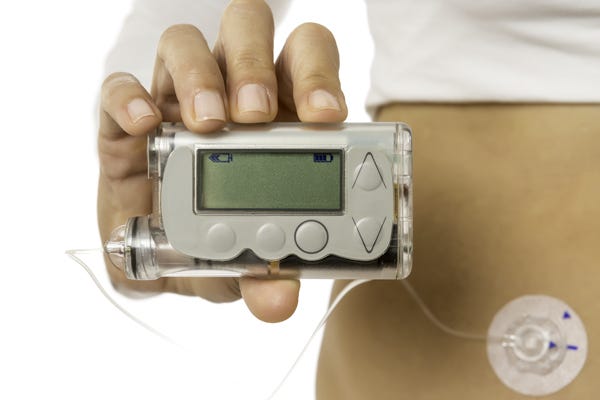June 15, 2016
Piston seals used in insulin pumps need to provide a strong seal at a low friction rate with a long life, say experts at Trelleborg Sealing Solutions.
Brian Nejib and Luis Tissone, Trelleborg Sealing Solutions
|
Advancements in insulin delivery devices often require more engineering advancements. (Image courtesy of Trelleborg Sealing Solutions) |
It's no wonder that insulin pumps are gaining in acceptance. They have the ability to make a real impact in patients' lives by eliminating the need for manual injections and offering instantaneous monitoring.
Some of the newest insulin pump advancements include:
Smaller pumps which are easier to wear, thus offering diabetics more options for daily activities and travel;
Safety controls, which include longer life mechanisms, lower friction piston seals, and high wear strengths;
Elimination of tubing: insulin delivery devices can now be placed directly onto the skin, thereby providing the ability to carry the device in a patient's pocket or purse (within a six foot range)
Small insulin pumps with instantaneous monitoring and medicating, thus potentially making the manual syringe needle obsolete in a few years
Artificial pancreas--glucose-sensing technology utilizes sensors to measure actual glucose levels. Used along with insulin pumps, they stop the supply of glucose once a pre-programmed threshold is met.
According to the American Diabetes Association, in addition to eliminating injections, insulin pumps deliver more accurate dosing. This can improve A1C levels (blood sugar levels), decrease large blood-glucose swings, reduce low blood-glucose episodes, more efficiently deliver boluses, and allow diabetes sufferers to exercise without first having to eat large amounts of carbohydrates.
(Check out Trelleborg Sealing Solutions at Booth #1863 at MD&M East, June 14-16 in New York City.)
Better Performance Through Better Seal Materials, Coatings, and Geometry
As mentioned, these advancements in insulin delivery devices often require more engineering advancements, with sealing components a critical part of this. Significant design-engineering attention must be made to the piston seal used in insulin pumps. In order to perform to the level required for these newer insulin pumps, these seals must provide a strong seal at a low friction rate with a long life.
The first and generally most important design consideration is the material compound to be used. There are thousands of potential polymeric compounds to consider, including silicone, PTFE (polytetrafluoroethylene), and EPDM (ethylene propylene diene monomer). Focusing in on the best compound is a matter of considering its ability to be sterilized, leachability, availability, and extractability, along with applicable regulatory requirements. Insulin pump manufacturers will want to work with a supplier that has the ability to completely understand how the seal must function within the device, the manufacturing requirements, and the regulatory environment.
Coatings are sometimes advantageous to be added to the seal in order to reduce friction, increase the life of the seal, and/or add antimicrobial properties. However, the coating should be tested rigorously to make sure it will not have a negative impact as part of the solution. It is important to look at the release properties, temperature performance, abrasion resistance, and product integrity.
Another important factor in the design of insulin pumps is the geometry of the seal. This will determine its coefficient of friction, degree of force, and hydrodynamic qualities. It's critical that the seal remains in line with the required gradient (measurement) of dosage. Equally important is to consider how the needle will be voided after use and whether or not one or several "lay downs" on the bore of the syringe will be needed (this is determined by the motor's mechanical force to move the plunger).
Device manufacturers will be able to take advantage of this market growth by working with suppliers familiar with these newer engineering techniques and compounds for high performing insulin pumps, and infusion pumps in general.
Brian Nejib is a life sciences specialist and Luis Tissone is director of life sciences at Trelleborg Sealing Solutions (Fort Wayne, IN).
About the Author(s)
You May Also Like



